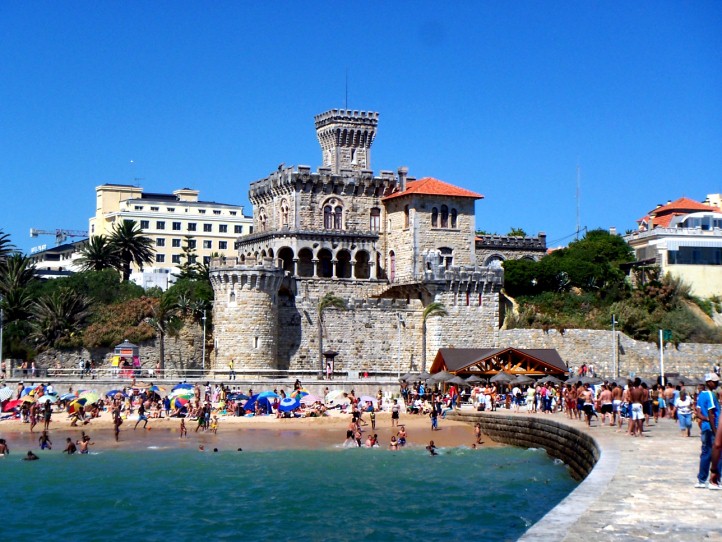Conference information and Technical Program Plan
About Portugal
Portugal is located on the west side of the Iberian Peninsula, along the Atlantic
East coast. In its entirety, Portugal occupies an area of about 92 000 km2, including
the islands of Madeira and Azores, in the Atlantic. Portugal has a population of
about 10 million people. The capital is Lisbon with a population of 1.5 million.

Known for its sunny beaches, Porto wine, or typical Fado music, Portugal is a chosen
destination for many holidaymakers, an ideal place for practicing water sports and
playing golf, offering modern tourism facilities. A member-country of the European
Union since 1986, it currently enjoys a steady economic growth. For centuries Portugal
has kept this greatest treasure: a renowned reputation of hospitality that makes
the country a haven of congeniality and safety. The history of this geographical
area is rather long, spanning from the Palaeolithic period 7000 BC into the dawn
of civilization. At the end of the Neolithic period, starting 1200 BC and for almost
2500 years, the Phoenicians, the Greeks, the Carthaginians, the Romans, the Visigoths
and the Arabs successively invaded and settled in the Iberian Peninsula. The latter
remained in control until the 11th century when Ferdinand, ruler of the kingdom
of Leon and Castile, conquered much of the territory. An independent kingdom since
1143, Portugal established its continental frontiers in 1297 and is one of the oldest
nations in Europe. Portugal became a major player in Europe at the age of the discoveries
in the 15th century, when it developed and mastered the nautical science and discovered
new lands, setting new trade routes to as far as India and Japan.
The monarchy was overthrown in 1910 by republican forces. A stable democracy started
in 1975. You may find here additional information about Portugal.
About Lisbon

Lisbon, with a population of about one million inhabitants (two million in the metropolitan
area), is the capital, the chief port and the largest city of Portugal. It stands
on the westernmost point of land of the European continent, where the Tagus river
flows into the Atlantic Ocean. Its climate is probably the mildest of all European
capitals.

Lisbon is one of the most ancient cities in the western Europe. Probably inhabited
since the Neolithic period, it was settled by Phoenicians in 1200 BC, who named
it Alis Ubbo (calm port). They prospered for more than 600 years until it was occupied
by Greeks and Carthaginians, then by the Romans in 205 BC, by the Barbarians in
the 5th century AC, by the Arabs in 715 AC, till it was finally conquered by D.
Afonso Henriques during the Cruzades in 1147, and declared capital of the Portuguese
kingdom in 1252. The city name evolved with each new occupant until its present
form Lisboa.

Being already an important city when conquered in 1252, it continued growing its
importance. In 1260 the King Afonso III transferred his court there from Coimbra.
The University of Lisbon was founded in 1292.
In the 15th and 16th centuries, the Age of the Discoveries, Lisbon became the centre
of the world and the entrance of Europe to the Oceans. It is perhaps this long history
of finding new lands and cultures that explains why Lisboans are, by nature and
tradition, open to the new and very welcoming to visitors.
From the 18th century, after the destruction of the city by the earthquake of 1755,
Lisbon gradually took its modern lines as new, wider streets with rectilinear lines
sprang up alongside the old quarters, to be joined in the 19th and 20th centuries
by the Avenidas Novas (new avenues) and setting the shape of the city of today.
IST Congress Center
The Conference will be held at the Congress Centre of Instituto Superior Técnico
(IST) - Technical University of Lisbon, Portugal. The Congress Centre is located
in the Civil Engineering building from IST. It has a 300 seat auditorium and several
additional rooms for poster sessions, exhibitions and meetings. All the area is
covered by wireless internet access.
How to arrive
The Instituto Superior Técnico campus, is located about 6 km away from Lisbon International
Airport. Taxi travel from the airport to Hotels near the Congress Center take about
15 min (depending on traffic) and it costs about 10€.
Alternatively, the Aerobus (Nº 91) runs between the Airport and the city center
every 20 minutes. Service begins at 07:45 am and ends at 08:15 pm. The ticket may
be purchased from the driver when boarding the bus (3.70€). The closest bus stop
to the IST Congress Centre is “Saldanha”.
The IST area can be reached using other public transportation services. The campus
is located within a short walking distance of two Lisbon subway stations: Alameda
(in the green and red lines) and Saldanha (in the yellow line). The diagram of the
subway network can be seen in the following link. IST campus is also served by bus
Iines 16, 22 and 40 from the Lisbon bus company (Carris).
Hotel Information
Click here for information about hotels